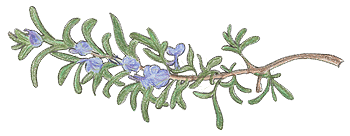On Decoration Day (known today as Memorial Day) of 1916, the small town of Kindred held a large celebration. Hundreds of townsfolk and visitors gathered in the quiet community to pay homage to the veterans of the Spanish American War. While the Great War raged in Europe, the citizens of Kindred enthusiastically honored their veterans. While the monument was initially a source of pride for Kindred’s Norwegian community, the monument was forgotten almost immediately after it was established--not because of shame, but because memories of the earlier war were rapidly eclipsed by the enormity of World War I.
In the early 1900s Kindred was an overwhelmingly Norwegian town. Norwegian Americans were still seeking recognition as “good Americans,” which may partially account for Kindred’s decision to commemorate the turn-of-the-century war and its local veterans. Ole T. Lykken had come to the Kindred area from Norway in the late 1890s and ended up working for his cousin, Iver Lykken, on the latter’s farm. Answering President McKinley’s 1898 call for volunteers, Lykken joined Company K of the First North Dakota Volunteer Infantry, one of eight companies in the state selected for federal activation.
The First North Dakota arrived in Manila Bay July 31, 1898. The following day they joined in the taking of Manila, encountering little resistance and suffering only one combat injury. In fact the Spanish surrendered to the United States on 12 August, even before the taking of Manila. However, in February the Philippine insurrection against the United States began. By the time they left the islands on 31 July 1899, twelve soldiers of the 1st North Dakota had earned the Medal of Honor for their service. On the opposing side, thousands of Filipinos gave their lives to their nation in the ill-fated war for independence.
Ole Lykken, however, spent much of his tour of duty fighting illness. He succumbed to typhoid fever and pneumonia November 21, 1898. It was a less than a glorious end for Lykken, who was laid to rest in a distant land (his remains were repatriated to Kindred in 1900) and left behind little but a $35 clothing credit (minus $5 deducted from his pay for a disciplinary infraction) and a few belongings, which were auctioned off by the military for $7.90. Having died less than a year into his service, Lykken was ineligible for death benefits.
The Spanish War monument was built for the most part through the work of Iver Lykken, Ole’s cousin, and Carl Rustad, who had served with Ole in the Philippines. North Dakota Governor L.B. Hanna and U.S. Senator William Purcell headlined the monument’s dedication. The monument, a 10-foot granite obelisk, stands on the north side of the Kindred Cemetery along Cass County Road 15.--Research by Josh Eslinger
Flickr Album
View an album of photographs from the monument site.
Recommended Reading
Cooper, Jerry. Citizens as Soldiers: A History of the North Dakota National Guard. Fargo, ND: North Dakota Institute for Regional Studies, 1986.
Richardson, Antona H. Minnesotans in the Spanish American War & the Phillipine Insurrection. Paduan Press, 1998.
Karnow, Stanley. In Our Image: America’s Empire in the Phillipines. Ballantine, 1990.
Want to talk about this monument, or other heritage sites on the northern plains? Join the discussion on Facebook. Check out the center's Facebook group, Heritage Trails.
 Remembrance in Stone / Center for Heritage Renewal
Remembrance in Stone / Center for Heritage Renewal